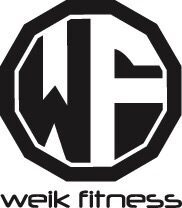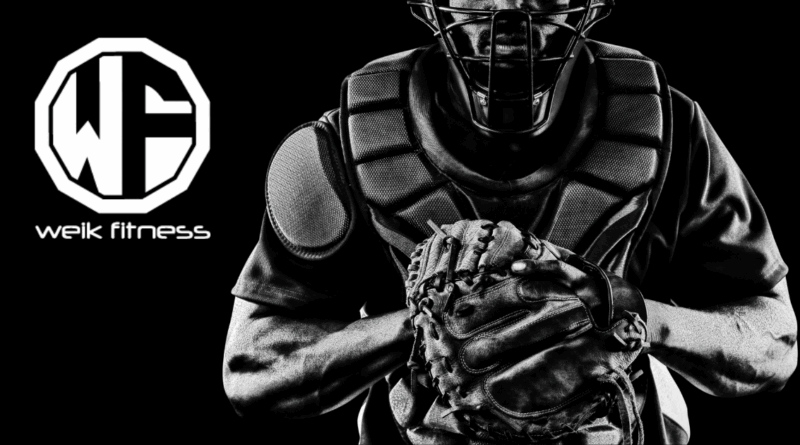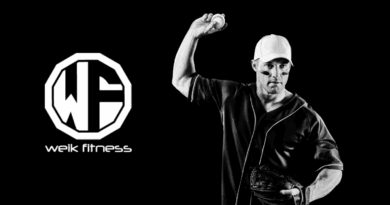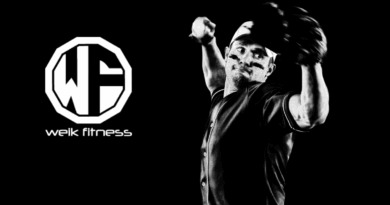Best Baseball Workouts: Strength Training & Exercises
Feeling slow or weak on the diamond? Is your kid’s performance not up to par with the rest of the team? Well-thought-out baseball workouts blend strength training, speed and agility, and joint care so you or your child can play harder and longer.
The fact is, I’ve seen good players become great, and not so good players become good. Everyone has a next level they can unlock with the right program.
As a certified strength coach and sports nutritionist (my credentials: BS, CSCS, CPT, CSN), I’ve had the utmost pleasure working with baseball players from the high school baseball level all the way up to the MLB. The offseason workout is key for athletes, and many MLB players take that time to improve their body, strength and power, and performance to get ready for next season.
You and/or your child should be thinking the same.
In this guide, you will learn simple, proven exercises for your lower body, upper body, and core, plus quick drills for speed. Baseball workouts don’t need to be long or extensive; it’s about being smart when training for baseball. Use these moves to hit with more pop, throw with less stress, and round home plate in fewer steps.
Now, you may be wondering why I’m giving this information away for free if I train athletes. The answer is simple: I want to help as many baseball players as I can. I also coach multiple youth baseball teams, and I want to see not only my athletes but your athletes improve in the sport.
RELATED: Wilson A2000 — The Best Infield Wilson Baseball Glove?
While this guide on baseball workouts isn’t super extensive (I save my trade secrets for paying clients), it’s a great way to get started training for baseball and notice a huge improvement before next season starts. So, hopefully you or your child gets something out of this guide.
Disclaimer: This article is for informational purposes only and is not meant to treat or diagnose any condition. It is recommended that you speak with your doctor before starting any exercise program, changing your daily nutrition, or adding any supplements to your regimen.
Table of contents
- Key Components of Baseball Workouts
- Lower Body Baseball Workouts
- Upper Body Baseball Workouts
- Core Strength Exercises
- Speed and Agility Training
- Injury Prevention and Recovery
- Examples of an In-Season and Off-Season Strength and Conditioning Baseball Workout
- You Can Start Baseball Workouts as Early as Youth Baseball
- Baseball Workouts FAQs
- Baseball Workouts References
Key Takeaways
- The best baseball workouts combine lower body strength, upper body power, core stability, and speed drills for complete performance.
- Barbell squats and Romanian deadlifts build key leg and hip muscles that drive sprints and throws; track squat depth during 4–8 week strength phases.
- Dumbbell bench presses and pull-ups support shoulder health and swing speed; resistance training can raise throwing velocity over a twelve week block.
- Planks and Russian twists develop rotational core strength for hitting and pitching; consistent plank work helps reduce back pain.
- Off-season plans run four months with heavy strength work; in-season training alternates workouts every two days with a full rest week every fifth week.
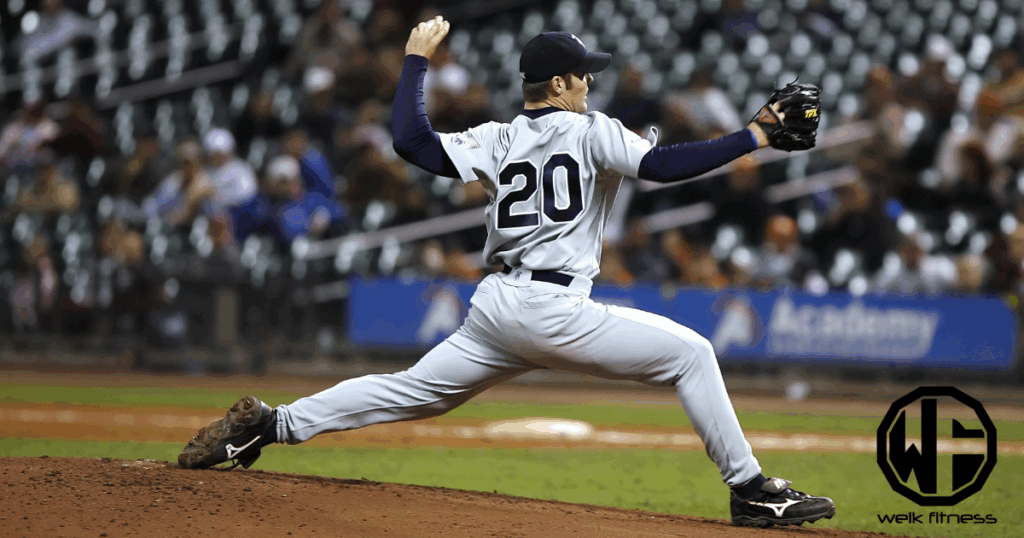
Key Components of Baseball Workouts
Every strong baseball training program challenges the lower body, upper body, and core. These pieces work together in every play, from your first step to your final throw.
How can I develop lower body power for baseball?
Start with a warm-up to raise body temperature and improve flexibility. Use dynamic exercises like high knees, walking lunges, and band walks before heavier lifting.
Barbell squats, Romanian deadlifts, and weighted lunges build strength in the hips and legs. Focus on technique for each rep. Clean form keeps the knees and back safe under load.
RELATED: Baseball Nutrition Guide — What Should Baseball Players Eat?
Mix in plyometrics, which are quick jump drills that train fast force. Try box jumps, single-leg hops, and jumping lunges for explosive power. These moves support faster base running and stronger drives off the mound.
Strive to sleep 7–9 hours per night. One thing athletes seem to forget is that recovery is training too, especially during hard workout sessions.
Something to consider is that great pitchers use their legs as much as their arms; lower body power is everything in baseball.
Why is upper body strength important for throwing and hitting?
Powerful arms, stable shoulders, and a strong back help you swing faster and throw harder. Upper body strength boosts bat speed, accuracy, and control.
RELATED: Baseball Hitting Drills to Improve Your Play
Use resistance training like dumbbell incline bench press and pull-ups. These build triceps, forearms, chest, and the rotator cuff, which is a group of small shoulder muscles that guide the arm. Strong support muscles protect the shoulder and elbow during long seasons.
Combine heavier weight room work with medicine ball power drills on the field. Expect better stability while catching tough balls, with a full range of motion for every play.
These habits separate top players at every level, from youth baseball to Major League Baseball. Upper body training is a pillar in any athlete’s plan.
How does core stability improve rotational power?
Core stability is your body’s ability to stay steady while moving. A strong core lets you create force in the legs, then transfer it through the torso to the arms during a swing or pitch.
RELATED: Yoga for Athletes — Boost Recovery and Sports Performance
Use seated trunk rotations, kneeling slams, and isometric holds, which are tension holds without movement. Ballistic medicine ball throws teach fast, explosive power.
Keep tall posture and breathe well during each rep. Good alignment improves energy transfer from the ground to your hands. A stable core also corrects imbalances that slow rotation, so you move faster with more control in every phase of the year.
Lower Body Baseball Workouts
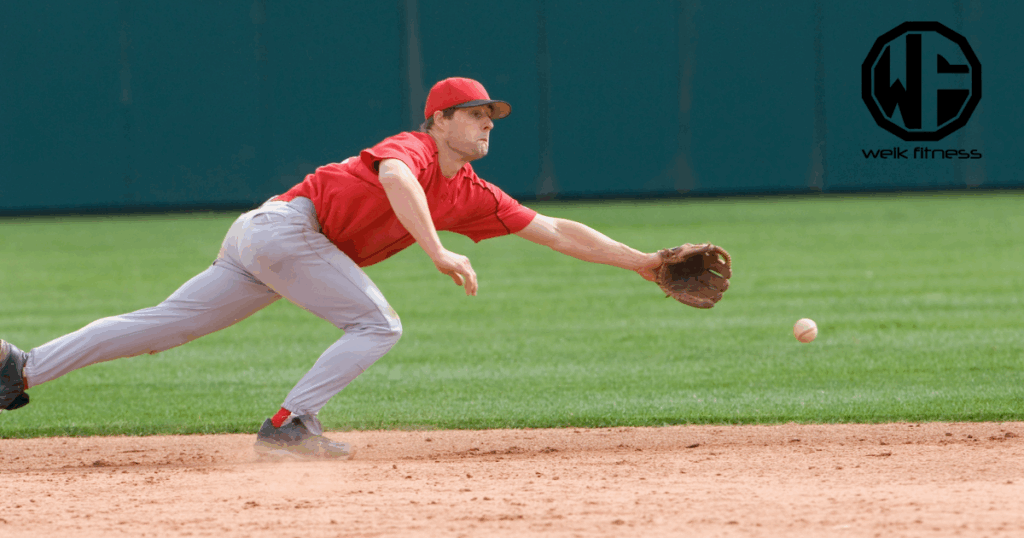
Lower body strength changes the game. It supports powerful swings, quick sprints, and explosive throws. Combine strength work with plyometrics for speed and stability on the field.
How do barbell squats improve baseball strength?
Barbell squats are a cornerstone of strength and conditioning for baseball players. This classic lift builds the power base for sprinting, hitting, and throwing.
- Barbell squats develop the glutes, hamstrings, and quadriceps, which drive every swing, sprint, and throw.
- Squat depth matters. Reaching parallel or below increases strength across the full motion used on the diamond.
- Four to eight week base phases create safe progress so you can handle heavier weights later.
- Back squats train many muscles at once, improving coordination that carries into quick field moves.
- Coaches use squat patterns to spot weak links and build better movement fast.
- Squats support plyometrics and circuits, improving power and control for base running and fast reactions.
- Strength work with squats helps adolescent baseball players grow strong and protects pitchers’ knees during high-force throws.
- Perfect form before more weight. Technique first prevents setbacks and keeps gains steady.
- Squats in the off-season sharpen baseball performance for position players chasing an extra edge.
Why include Romanian deadlifts in your baseball workouts?
Romanian deadlifts, called RDLs, train the back side of your legs and hips. Strong posterior muscles protect you and build fast power.
- RDLs target hamstrings, glutes, lower back, adductor magnus, and core, the engine for strong swings and clean throws.
- They increase hip and hamstring mobility, which supports faster sprints and higher pitching velocity.
- RDLs improve single-leg balance and fix side-to-side strength gaps.
- Stronger hips help you generate more force in both hitting and pitching.
- They teach the hip hinge, a key movement for squats, sprints, base running, and fielding.
- Consistent practice builds resilience for sudden stops and quick direction changes in games.
- Clean form limits bad habits and keeps performance high during long seasons.
- RDLs improve flexibility, which helps you reach better squat depth over time.
- Use RDLs in early and mid preseason to prepare for in-season demands and off season growth.
- Pitchers gain extra protection. A stronger posterior chain lowers the chance of nagging strains.
- Each rep builds functional strength for baseball’s unique demands, which shows up on game day.
Start with light to moderate loads. Add weight slowly as your technique improves.
What are lateral explosive jumps and how do they help baseball players?
Lateral explosive jumps, also called lateral bounds, train fast side-to-side moves. They build agility and stability for fielding, base running, and quick cuts.
- Bounds mimic the shifts you make to chase a ground ball or steal a base.
- They boost lateral power by pushing hard from one leg to the other.
- Regular practice improves direction changes and reduces errors during play.
- Explosive jumps use the stretch-shortening cycle, a quick stretch that stores and releases energy.
- These drills can ease joint stress when taught well, which helps you stay on the field.
- Master lateral lunges first. Then add power to stay safe and clean.
- Plyometric bounds raise reactive strength and speed for all positions.
- Late preseason is a great time to ramp bounds for power development.
- Minimal gear keeps training simple, while control gains help hitting strength and arm strength.
Add lateral bounds to your week to boost speed and game day performance. The next big play might start here.
Upper Body Baseball Workouts
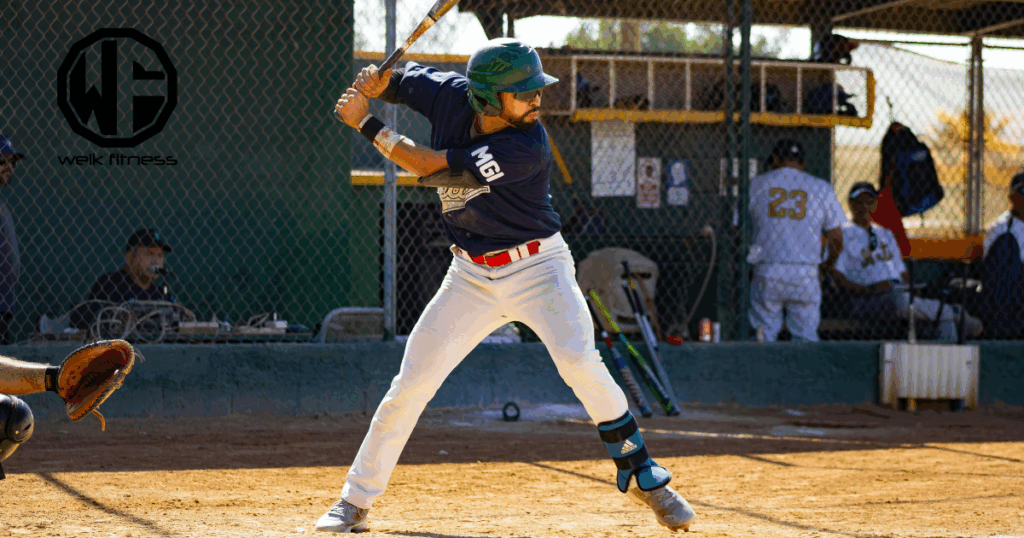
Upper body baseball workouts use dumbbell presses, pull-ups, and medicine ball throws to build usable power. Strong pushing and pulling muscles help you swing harder and throw faster.
How does the dumbbell bench press build baseball upper body strength?
The dumbbell bench press is a reliable builder for baseball-specific training. It develops strength for hitting and throwing while supporting shoulder control.
- Dumbbells make each arm work on its own, which balances strength for pitching and swinging.
- Sets of 12–15 reps for 2–4 sets build muscular endurance for long games.
- Pressing strengthens the chest and shoulders, which adds stability for the throwing arm.
- Better shoulder stability supports safe overhead throws with more power.
- Pair dumbbell presses with bodyweight and band work for a complete routine.
- This lift supports fast moves like hard swings and quick throws.
- In the off season, use heavier weights for growth. In season, use lighter loads or higher reps.
- Coaches like Eric Cressey love to use this press to balance push-ups and barbell lifts for game day power.
Stay consistent. Stronger pressing often shows up as harder hits and longer throws.
What are the benefits of pull-ups for baseball athletes?
Pull-ups are simple and powerful. They build grip, back strength, and shoulder control that carry into every inning.
- Pull-ups raise grip strength for better fastballs and controlled swings.
- They train forearms, biceps, shoulders, and upper back at once.
- Each rep builds vertical pulling power that helps with jumps and quick moves.
- Pull-ups improve shoulder stability and posture during long days.
- Eccentric reps, where you lower slowly, increase time under tension for growth.
- Rope pull-up variations add challenge and recruit more fibers.
- Three sets of six reps in mid preseason prepare you for hitting and defense.
- Pair with medicine ball throws to boost explosive batting power.
- Stronger lats support faster running and better lateral moves during steals.
Add pull-ups to off-season and in-season routines. Performance climbs one clean set at a time.
How do medicine ball throws improve baseball power?
Medicine ball throws train the full body to create and transfer force. They mirror real throwing patterns, which helps you play better, sooner.
- Medicine ball throws target the core and upper body, crucial for heavy throws and hard hits.
- Explosive drills teach your body to move as a unit from legs to hands.
- Studies show resistance workouts, including med ball work, can raise throwing velocity over twelve weeks.
- Shoulders and arms get stronger while reducing stress from repeat throwing.
- The motion matches baseball mechanics, which boosts transfer to the field.
- Many athletes notice faster swings and quicker reactions at bat and in the field.
- These throws improve coordination and timing between pitches and plays.
- You also sharpen balance and quick force production, key to beating opponents.
- Add two sets of eight overhead slams weekly with a six or eight-pound ball.
Use med balls to build power and protect joints. Each clean rep moves you nearer to peak performance.
Core Strength Exercises
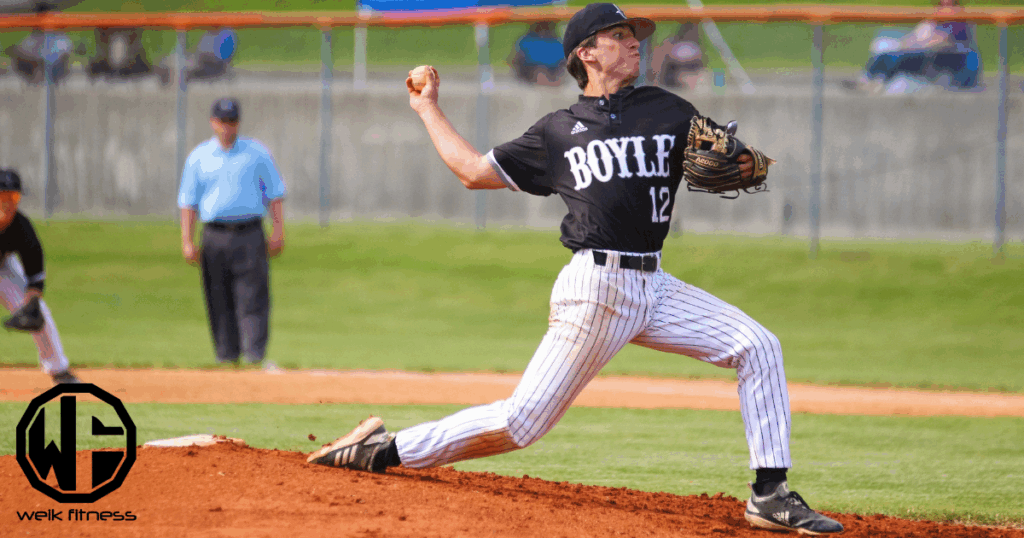
A strong core supports every swing and throw. Try ab holds, trunk rotations, and fast med ball drills. Expect better power and less strain through your back and hips.
Why are planks essential for baseball core strength?
Planks build a stable base for every pitch, swing, and sprint. They require no equipment, only control and steady breathing.
- Planks improve stability, limiting unwanted spinal twist during high speed moves.
- Keep your head, shoulders, hips, knees, and ankles in a straight line.
- Start with 10 second holds. Add time as strength grows.
- Core stability matters more than visible abs for baseball performance.
- A weak core slows force transfer and can stress the shoulder and elbow.
- Planks help lower back pain by strengthening deep abdominal muscles.
- They fit into any baseball workout, from beginners to pros.
- Progress slowly to avoid overuse injuries during long seasons.
- Coaches use planks across levels because the payoff is clear: stronger swings and throws.
How do Russian twists strengthen a baseball player’s core?
Russian twists build rotational strength, which drives hitting and pitching. They connect the hips and torso for smooth, powerful turns.
- Sit with knees bent and a straight spine. Hold a med ball for more load.
- Rotate side to side while keeping the back tall and braced.
- Engage obliques, rectus abdominis, and lats, the muscles that transfer energy.
- Control the movement. Avoid swaying legs to reduce injury risk.
- The twist matches batting and pitching motions, boosting rotational force.
- Add weight or speed over weeks to keep progressing.
- Shoulders also benefit, because the core connects to the upper back during twists.
- Consistent training keeps key stabilizers strong under game pressure.
- Use Russian twists with planks and med ball slams for a complete core day.
- Many players see better swing speed and core endurance across nine innings.
What are medicine ball rotational slams and how do they help baseball players?
Medicine ball rotational slams build fast twisting power. They train obliques, hips, glutes, and shoulders, the same muscles used in a hard swing.
- Hold a medicine ball, rotate your torso, then slam the ball to the side.
- Each rep targets the transverse plane, which is rotation.
- Obliques and hips fire with each twist and slam to drive force.
- Rotational slams mimic hitting line drives and turning double plays.
- You train stabilizers without heavy weights, keeping joints fresher.
- Power comes from the whole body, not just the arms.
- Try split stance slams or wall rebounds to challenge balance.
- Use rotational slams one to three days a week in warm ups or finishers.
- Late preseason is ideal for higher output without heavy barbell stress.
- Expect better core stability, faster turns, and stronger full body control.
Speed and Agility Training
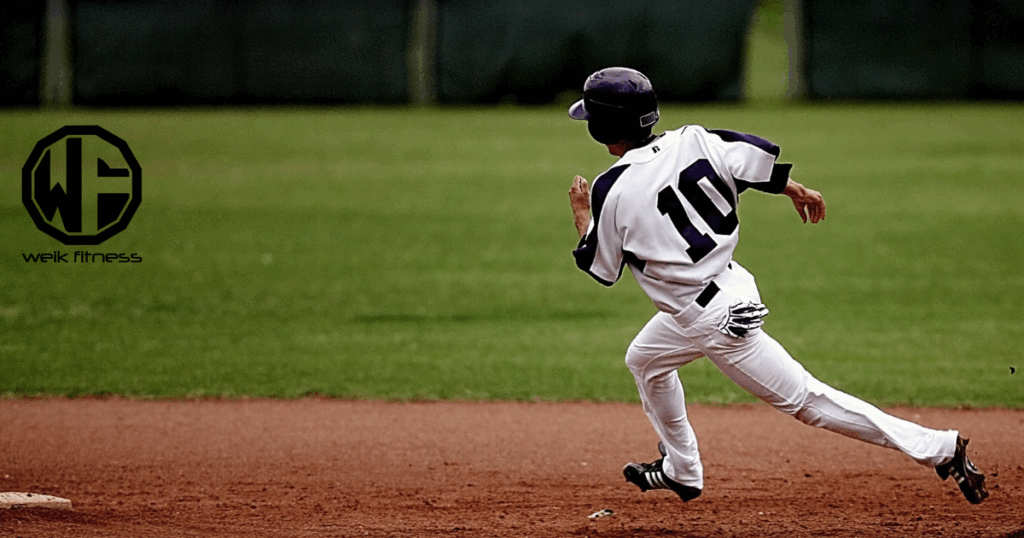
Speed and quick feet give you an edge on the diamond. Steal bases faster, chase down fly balls, and react to hard grounders with confidence.
What sprinting and shuttle run drills boost baseball speed?
Use focused sprints to sharpen acceleration and top speed. Shuttle runs build start stop control and conditioning for game pace.
- Lateral Short Shuttle Drill uses short side steps to improve reaction time for tracking fly balls.
- Directional Sprints practice quick starts in many directions, like stealing or chasing line drives.
- Resisted Sprinting with a band or sled builds first step quickness and leg drive.
- 40-Yard Dash Training improves top speed for outfielders and base runners.
- Plyometric Box Jumps grow single leg power for charging grounders.
- Speed Drills with cone shuttles teach acceleration, deceleration, and clean change of direction.
- Agility Ladder Footwork keeps feet light for quick moves between bases.
Training three to five days per week in the off-season can boost sprint times. Sessions can run up to 90 minutes. Stay consistent and push effort within safe limits.
How do agility ladder and reaction drills enhance agility?
Agility ladders and reaction drills sharpen footwork and fast decision-making. Both help you change direction under control.
- Ladder drills are simple and effective. Chalk or tape lines can replace a ladder.
- High knees through the ladder improve coordination and base running rhythm.
- Twenty minutes, two or three times per week, can show results quickly.
- Dot drills use quick hops on set points to build leg strength and speed.
- Quick change ladder work forces rapid starts, stops, and turns, just like game play.
- Ball drop drills train instant reactions that help track fly balls off the bat.
- Agility work strengthens stabilizers around each joint to reduce injury risk.
- Combine shuttles with ladders to build both stamina and foot speed.
- Consistent practice improves balance and clean pivots for double plays.
Injury Prevention and Recovery
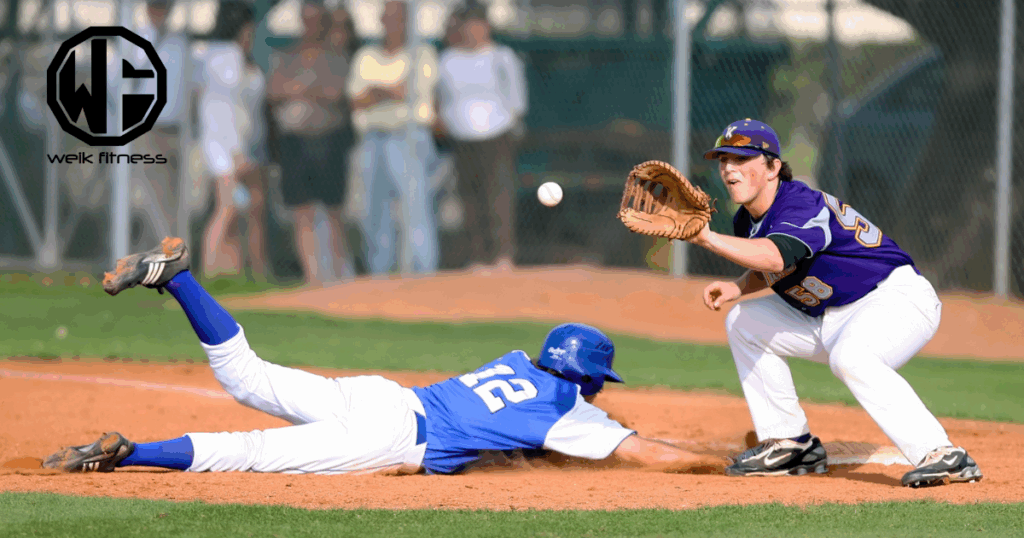
Smart baseball workouts include care for joints and soft tissue. Use foam rollers, bands, and dynamic stretching to prevent injury and speed recovery after hard days.
What dynamic warm-ups and stretching routines prevent injury?
Dynamic warm ups help muscles fire and reduce strains. They also prepare the nervous system for quick action.
- Start with high knees for 30 seconds to activate major leg muscles.
- Do leg swings forward, back, and side to side for 10 reps to loosen hips.
- Add arm circles, small to large, for 20 seconds each direction.
- Jog lightly for five minutes to raise heart rate.
- Use walking lunges with a twist or bodyweight squats for 15 meters.
- Include skips with arm swings or side shuffles for about 15 yards.
- Finish with static stretches like toe touches, quad pulls, or cross-body shoulder holds for 20–30 seconds.
- These steps reduce muscle imbalances that come from repeated baseball motions.
- Use this warm-up before training and games to keep muscles loose and responsive.
Many college athletes report fewer pulls and tweaks after adding focused dynamic warm ups before practice.
How can strengthening stabilizing muscles aid recovery?
Stabilizing muscles control motion at the joints. Training them improves form and reduces stress on the body.
- Do rotator cuff band exercises three to four times weekly. Use light resistance for 12–15 reps.
- Use a scapular series to build upper back control for a safer throwing arm.
- Better deceleration during throws reduces strain as the season ramps up.
- Strong stabilizers fight fatigue and limit overuse issues.
- Shoulder-focused work supports recovery after pitching or batting sessions.
- Keep rest short, about 30 seconds, to build endurance in small support muscles.
- Consistent stability training raises performance and can save games lost to soreness.
Examples of an In-Season and Off-Season Strength and Conditioning Baseball Workout
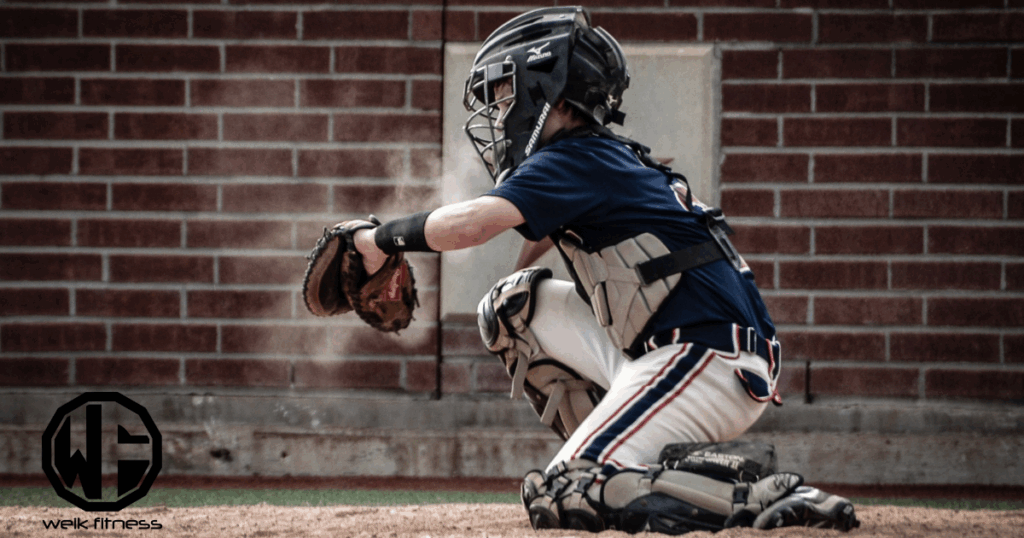
Off-season workouts run about four months. Use this time to build strength, speed and power, and agility.
Start with power training at 65–75 percent of one rep max for 2–4 reps, using both weights and plyometrics. Focus on long-term results by utilizing periodization. You shouldn’t jump into baseball workouts thinking you’re going to go 0-100 instantly.
After four weeks, shift focus to muscle growth and pure strength. Try two total body lifting days (you can use body weight exercises if that’s all you have, elastic bands, or by lifting weights), one day of acceleration sprints or shuttle runs for explosiveness, and one day of ladder or quick feet drills.
RELATED: GoFit Mega ProGym Resistance Band Set — 450 Lbs of Resistance Review!
In-season routines look different. Alternate strength, Phase 2, and power, Phase 3, sessions twice per week. Rest from all weight training every fifth week so your body can fully recover. Keep skill work first, and leave at least two days between heavy lifts and game day.
You Can Start Baseball Workouts as Early as Youth Baseball
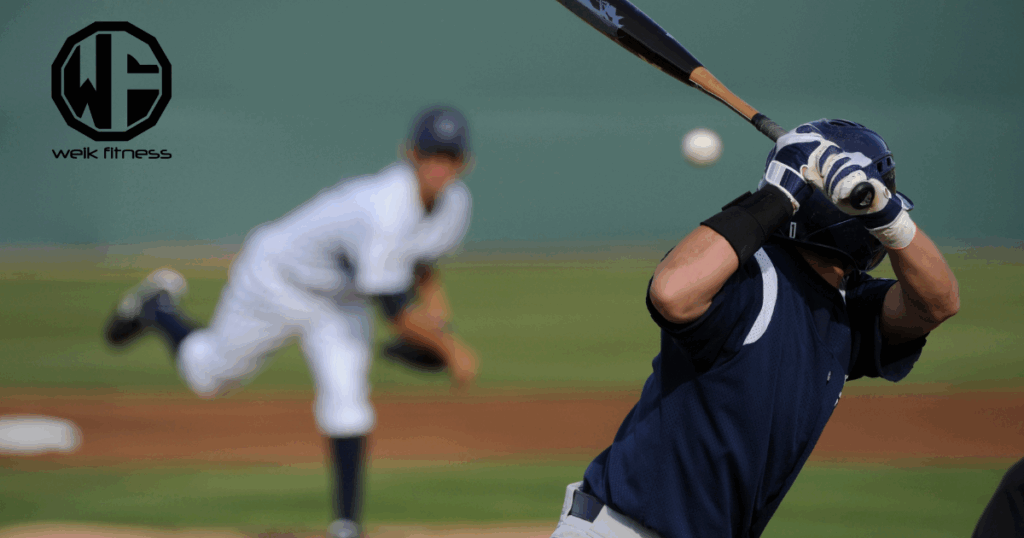
Great baseball workouts deliver more than strength development. They improve speed, balance, quick reactions, hand eye coordination, and agility and strength.
Squats and deadlifts raise lower body power. Bench presses and pull-ups support hitting and throwing. Core work, like planks and Russian twists, makes every swing more efficient. Use ladders and sprint drills to move faster in games.
RELATED: Build This Affordable DIY Squat Rack for Your Dream Home Gym
Baseball workouts should be done by both pitchers and position players, whether they are starting from youth baseball or are high school baseball players. My clients in the MLB started weight lifting with major muscle groups and implemented high velocity training to meet the unique demands of the sport.
If you want to make an impact in a baseball game, you will be able to tell a difference when you or your child starts weightlifting training. No, that doesn’t mean maxing out and experiencing insane delayed-onset muscle soreness (DOMS). And yes, baseball pitchers need to focus on athlete’s training as well.
Protect the throwing arm with light band exercises for the rotator cuff. Compression sleeves, such as Bruce Bolt models, can keep muscles warm and comfortable. If pain persists, stop and speak with a licensed healthcare professional. Training advice here is for education only and does not replace medical care.
Ask a qualified coach to check your form. Build smart habits, one workout at a time. Strength training, done well, can mean better at-bats, sharper defense, fewer injuries, and more wins.
If you live in Berks County and are looking for baseball training for your child, reach out to us. We offer in-person baseball workouts (sport-specific workouts) for both kids and adults. Hit us up if you’re interested.
Baseball Workouts FAQs
Squats, deadlifts, and lunges build strong legs and hips, which power your swing and sprint. Pull-ups and rows target your back muscles for better throwing mechanics. Medicine ball throws help develop explosive core strength that translates directly to hitting distance.
Aim for two or three sessions each week during the off-season to maximize muscle gains without risking injury. During the season, one session per week maintains your progress while letting you recover between games.
A strong midsection connects upper body movement with lower body drive; this link boosts bat speed and improves fielding agility. Planks, Russian twists, and cable rotations all support stability when swinging or throwing.
Yes, balanced routines strengthen muscles around joints like shoulders and knees so they absorb stress from quick movements or awkward landings. Consistent work builds resilience over time… keeping you healthy through long seasons filled with practices and games alike!
Baseball Workouts References
- https://www.topvelocity.net/2023/07/10/does-upper-body-strength-help-in-baseball/
- https://pmc.ncbi.nlm.nih.gov/articles/PMC10610610/
- https://blog.overtimeathletes.com/mlb-baseball-training-rotational-power/
- https://pmc.ncbi.nlm.nih.gov/articles/PMC4262933/
- https://blog.armcare.com/the-origin-benefits-and-applications-of-the-romanian-deadlift-for-baseball-and-sprinting/
- https://www.elitefts.com/education/utilization-and-progression-of-the-romanian-deadlift-in-baseball/
- https://keilperformance.com/articles/plyometric-training-in-enhancing-baseball-speed-and-agility/
- https://blog.overtimeathletes.com/plyometric-workout-for-lower-body-power/
- https://pmc.ncbi.nlm.nih.gov/articles/PMC7990992/
- https://blog.overtimeathletes.com/eccentric-upper-body-strength-training-for-baseball-athletes/
- https://pmc.ncbi.nlm.nih.gov/articles/PMC10731065/
- https://pmc.ncbi.nlm.nih.gov/articles/PMC11550301/
- https://pbsccs.org/why-baseball-players-need-core-strength-and-how-to-get-it/
- https://www.healthline.com/health/russian-twist
- https://vitruve.fit/workouts/rotational-medicine-ball-slams-exercise-guide-tips-and-benefits/
- https://blog.overtimeathletes.com/med-ball-series-for-baseball-rotational-power/
- https://blog.overtimeathletes.com/sport-specific-speed-drills-for-baseball/
- https://vertimax.com/blog/8-best-agility-training-exercises
- https://www.issaonline.com/blog/post/baseball-injury-prevention-exercises-to-boost-performance
- https://pmc.ncbi.nlm.nih.gov/articles/PMC12034053/
- https://advancedkinetics.com/4-strengthening-exercises-for-baseball-injury-prevention/
- https://www.issaonline.com/blog/post/off-season-baseball-training-speed-strength-power


*Disclosure: This article may contain affiliate links or ads, which means we earn a small commission at no extra cost to you if you make a purchase through these links. These commissions help support the operation and maintenance of our website, allowing us to continue producing free valuable content. Your support is genuinely appreciated, whether you choose to use our links or not. Thank you for being a part of our community and enjoying our content.
PLEASE CONSIDER SHARING THIS ON YOUR SOCIAL MEDIA TO HELP OTHERS LEARN MORE ABOUT THIS TOPIC.
